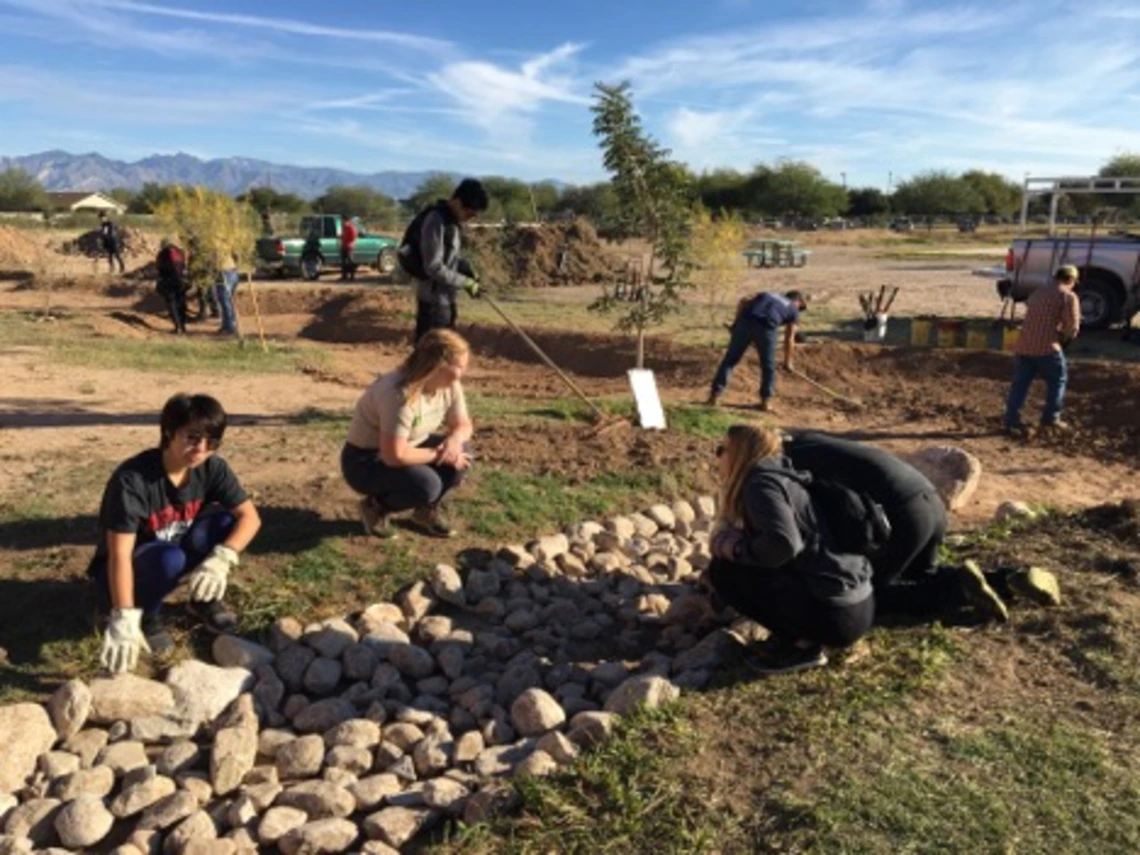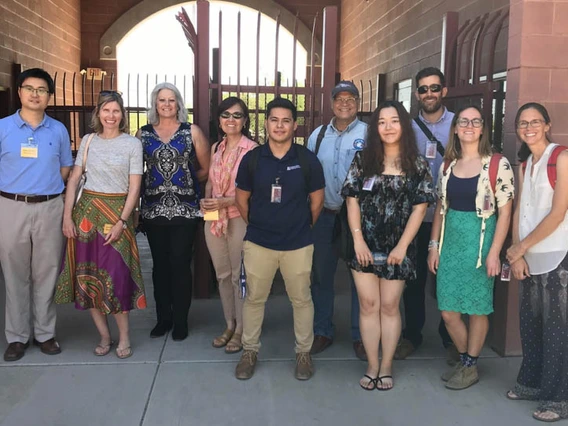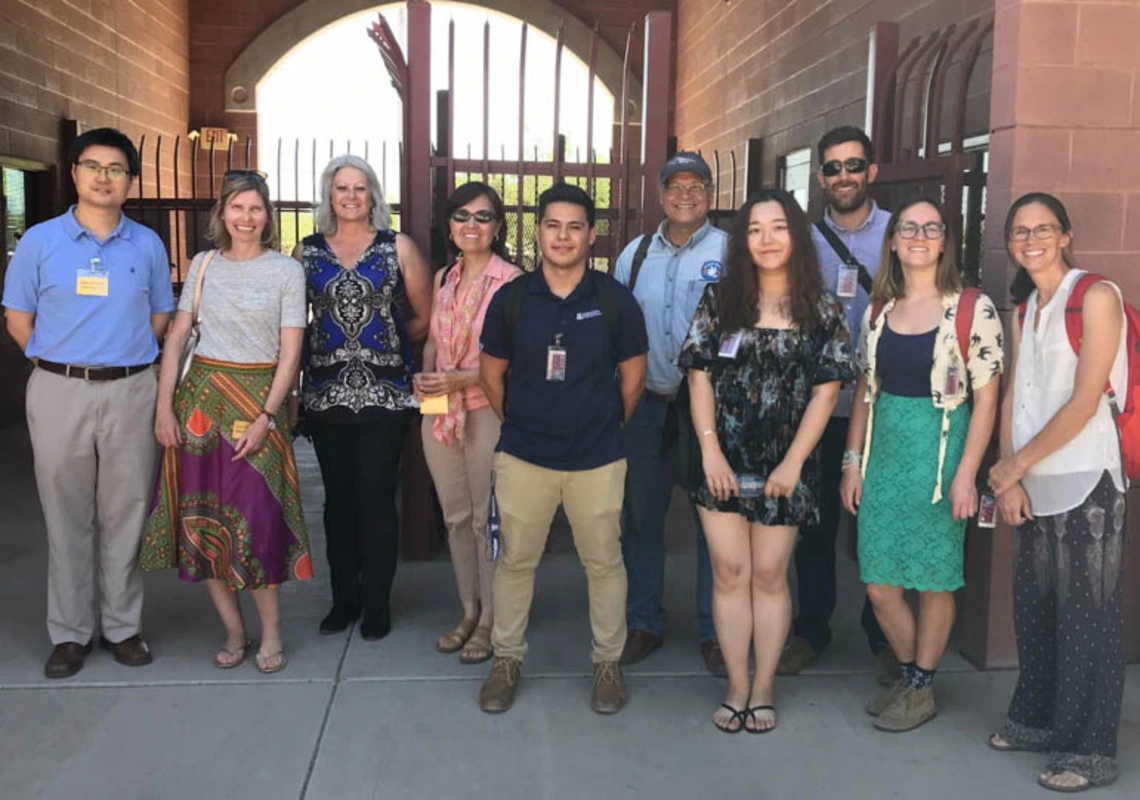University-Community Partnerships to Enhance Urban Resilience through Green Infrastructure

University of Arizona’s (UA) Udall Center for the Studies in Public Policy, Watershed Management Group (WMG), and Sonoran Institute proposed a two-year seed grant in January 2017 to increase resilience to climate change and build capacity and social capital. Central to long-term and sustainable success of such a project was moving from after-the-fact involvement of communities to a central role for community organizations in decision-making processes and guidance during planning, building, and maintaining greenspace.
Partners in this Green Infrastructure (GI) project, asked Tierra y Libertad, a Tucson grassroots organization to help connect more fully with the community. The expanded team then engaged with staff, faculty, and students at the STAR Academic High School (STAR) in project design. Eight master’s students in Bo Yang’s Design Studio class at UA Master of Landscape Architecture degree program undertook a collaborative design approach which included interviewing STAR faculty, staff and students to get their input for the design. Working with community partners, UA students got real-life, hands-on experience to enhance their academic experience. They were also able to contribute to mentoring high school students – a win-win for all. The final design includes outdoor classrooms, an amphitheater, restrooms that use composting toilets, a composting area, a monarch butterfly garden and a vegetable garden, art pieces, multiple spaces for seating, plenty of shade and more.
GI implementation encompassed the engagement of 80-plus volunteers including UA students, STAR students, faculty, and staff and local artist Carlos Valenzuela who trained STAR students in mosaic art for input to the site plan. WGM staff trained high school students in precision excavation of water harvesting basins and building straw bale benches. This interdisciplinary approach was useful to attract and engage students with different interests.
 In addition to creating community-driven/university-enhanced GI at STAR school, the project gave rise to (or seeded) the development of three longer-term programs. First, STAR created a new student club for green infrastructure named STAR Barrio Verde. In this club, students participate in the design and implementation of green infrastructure, funded by the UA Green Fund. Science teacher Rene Corrales joined the Arizona Wet Project and is now eligible for NOAA funds to advance other projects. By participating in the student club, new students get trained by older students increasing interest in the program.
In addition to creating community-driven/university-enhanced GI at STAR school, the project gave rise to (or seeded) the development of three longer-term programs. First, STAR created a new student club for green infrastructure named STAR Barrio Verde. In this club, students participate in the design and implementation of green infrastructure, funded by the UA Green Fund. Science teacher Rene Corrales joined the Arizona Wet Project and is now eligible for NOAA funds to advance other projects. By participating in the student club, new students get trained by older students increasing interest in the program.
The second program is the innovative GI curriculum developed at Hollinger Middle School. The science teacher, Rebeka Denson, incorporated GI into her science class as part of the lesson “Future Cities.” In this lesson, students require to think how cities will look in the future and green infrastructure is one of the strategies used to decrease heat and manage water resources in the desert. Denson organized a competition where students created models for green infrastructure. In developing models, students learned about passive and active rainwater harvesting systems. A bike tour and field visits to rainwater harvesting sites complemented the contest.
The third program advanced academics at the UA. As part of the engagement students of the Masters of Landscape Architecture to design the landscape of STAR Academic High School, UA students visited STAR on several occasions and interviewed high school students in groups. During these interactions, they not only talked about the design needs but also about career options. After these interactions, the UA is not a distant and foreign possibility for STAR students. Yang is looking forward to continue working with communities in need of landscape design projects in his future courses.
Partners believe expanding networks is essential for building social capital. STAR students, faculty and staff met with neighbors, UA professors, local organizations and government to identify GI opportunities and potential collaborations. An example of this effort is the new bus shelter installed on the street outside STAR that serves the school community and their neighbors. Another project initiated by STAR was the adoption of a traffic circle for students to practice the designing, implementation, and maintenance of GI. This Visioning Event led by STAR and Tierra y Libertad brought the community together to talk about community engagement, challenges, resources and how neighbors envision the future of their neighborhood.
To continue the collaboration with STAR, the Udall Center obtained funding from the UA College of Architecture, Planning and Landscape Architecture to recruit university students to engage with STAR students for monitoring and maintenance as well as evaluation of the GI work on their campus. Partners plan to have a maintenance day of work in fall 2019.
“Resilience is not only about reducing flooding and heat, but it is also about strengthening and empowering communities. The Haury Program’s seed opportunity helped us expand our project idea beyond community engagement to include GI design and implementation, opportunities for youth, building capacity, and expanding social networks”, said Adriana Zuñiga, Senior Lecturer for the Sustainable Built Environments Degree Program at the College of Architecture, Planning, and Landscape Architecture and project’s Co-PI.
Visit Tucson Verde para Todos website.
More information about this and other projects funded by the Haury Program here.


